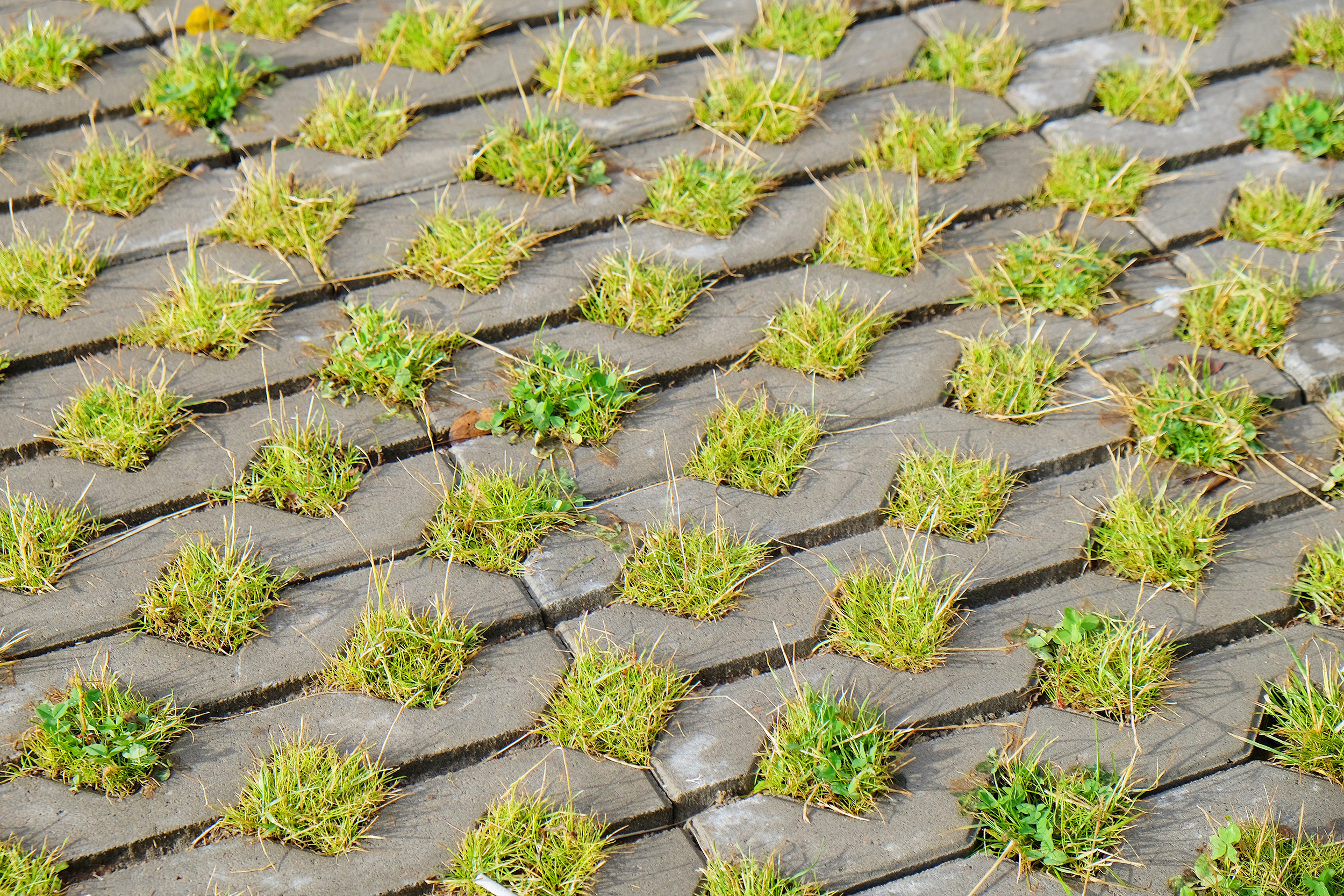Landscape Design with Water in Mind!
May 24, 2019

Looking to update your landscaping? Making the decision between using impermeable and permeable surfaces for driveways, sidewalks and patios can have a great impact on our water quality. Continue reading to learn more!
Impermeable and Permeable Surfaces…What’s the Difference?
Impermeable surfaces like roadways, parking lots, sidewalks and rooftops, prevent water from being absorbed into the ground. Instead, these surfaces create runoff that picks up pollutants such as trash, bacteria and pesticides and flows into our storm drains. These pollutants are then transported to our waterways, including the ocean, without being treated.
On the other hand, permeable surfaces are porous and allow water to be absorbed into the ground. This process naturally removes pollutants, provides water for plant life and recharges groundwater resources. When we use permeable, in place of impermeable surfaces, we help restore these ecosystem services that would otherwise be lost. Making sure our water system stays balanced ensures we all can enjoy healthy oceans, creeks and rivers.
How Can I Help Reduce Runoff?
There are multiple ways you can help reduce runoff issues from impermeable surfaces.
- Replace impermeable surfaces with permeable ones when possible. For example, install permeable pavers or stepping stones and gravel for your new patio, swimming pool deck or walkway.
- Plant a tree. A tree’s leaves collect rainwater and their root system absorbs it, helping reduce runoff.
- If you have non-clay soils, create plant depressions and sunken gardens where water will be encouraged to infiltrate instead of runoff.
- Check out our blog “Blame it on the Rain” for tips on how to capture rainwater in your yard!
Did You Know?
In undeveloped areas, on average only 10% of water that falls on the ground becomes runoff because of the landscape’s naturally permeable surfaces. In urban areas, the higher degree of impermeable surfaces leads to over 50% of water becoming runoff. This increase in runoff can cause issues like localized flooding and degraded water quality. When updating your landscaping, be sure to keep your local waterways in mind and consider permeable options when possible!*
For more tips on how to install permeable surfaces click here.
If only people realized what a precious thing our water is!! We moved into a HOA gated area and were given permission to plant a drought-free garden which our landscape designer did. It requires very little water and most people around us say they enjoy it! Now they are doing away with all outside planting and only allowing it in enclosed patio areas! None of the turf is to be removed. What a shame!
Are there grants or aid programs to help upgrade our current yard landscape to accomodate the permeable surface landscape?
H2OC Stormwater Program
Hi John, currently SoCal Water Smart does not have a specific permeable pavement rebate available. However, they have a variety of other rebates available for residents. You can find them at http://socalwatersmart.com/en/residential/#